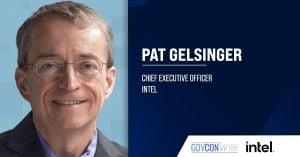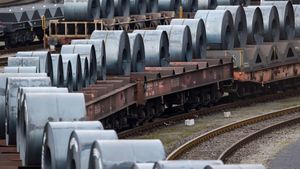NASA's Boeing Starliner mission took a troubling turn when two astronauts found themselves stranded aboard the International Space Station (ISS) much longer than initially planned. Butch Wilmore and Suni Williams, who launched on June 5, expected to spend merely eight days checking the Starliner systems before returning to Earth.
Unfortunately, just as the astronauts made their way to the ISS, the spacecraft encountered serious issues; five thrusters malfunctioned and the system experienced gas leaks. What started as a straightforward mission has now extended over eight weeks, prompting urgent discussions about the spacecraft's future.
Boeing and NASA currently find themselves engaged in critical troubleshooting efforts to determine if Starliner is safe for the return of its crew. Initial fears led NASA to explore extreme contingency plans, including the possibility of sending the Starliner back home empty, using SpaceX's Crew Dragon to bring Wilmore and Williams back.
Nobody expected Starliner's first crewed flight to stretch this long. The plan was to certify the Starliner spacecraft for future flights, but now, both the spacecraft and astronauts face significant uncertainties.
During August discussions, NASA revealed its concerns over the functioning of the Starliner's batteries, which provide power for only 45 days. Even though the batteries have been charged via the ISS, their lifespan has become critical due to the extended time away from Earth.
Ken Bowersox, NASA's associate administrator, noted the urgency of deciding whether to bring the crew home on Starliner or send them back on SpaceX's Crew Dragon. He stressed the significance of gathering all available data before making such decisions, indicating the precarious balance of risks at play.
Adding to the pressure, Starliner's thruster issues pose additional risks during undocking from the ISS, as failure of multiple thrusters could lead to the spacecraft drifting uncontrollably or even colliding with the ISS. Astronomer Jonathan McDowell characterized the situation as particularly grave, noting the dangers inherent to returning the craft without addressing the existing faults.
With the threat of collision looming, NASA officials have openly expressed their apprehensions about Starliner's capabilities. Although Boeing continues to assert their confidence, the grilling from various quarters and the long history of troubling spacecraft design has put them under scrutiny.
This entire process has been quite taxing for the astronauts aboard the ISS. Their original schedule had them primarily focused on evaluating Starliner systems, but they’ve shifted to conducting regular maintenance and experiments on the ISS instead.
While astronauts have tussled with dangerous spacecraft in the past, the memory of the Challenger and Columbia disasters has made NASA more risk-averse. This cautious approach stems from lessons learned the hard way, instilling new protocols aimed at preventing shortcuts and prioritizing crew safety above all else.
Meanwhile, discussions are underway about whether either astronaut should attempt to conduct external evaluations of the spacecraft’s troubling hardware. Agency officials quickly discounted the idea of astronauts performing spacewalks to inspect the thrusters, reiteratively pointing out the impracticalities of such measures.
Moving forward, NASA is racing against time, both to gather data and make decisions. Bowersox described the potential seriousness of getting crew members back aboard the spacecraft as they complete final preparations for their flight readiness review.
This situation not only raises concerns for the immediate mission but also for the long-term future of Boeing's involvement with crewed spaceflight. The Starliner program, initially celebrated, has transformed from potential triumph to significant turmoil.
Compounding these troubles, Boeing's credibility within the aerospace industry faces scrutiny. The company has already dealt with setbacks across its fleet, including the infamous 737 MAX incident, which has left lasting wounds on their reputation.
Looking back, the Starliner mission saw delays cropping up even before its launch, raising questions about Boeing's focus and attention on quality control. With the mission dragging well along its timeline, the stakes remain high for both NASA and Boeing as they grapple with the realities of space exploration.
After all the ups and downs, the astronauts are certainly feeling the strain of extended time away from their families. Joe Acaba, NASA's chief astronaut, acknowledged the emotional toll this mission has on everyone involved.
He insisted Wilmore and Williams have integrated well with the ISS crew, but he also recognized the psychological pressures they face. While the astronauts are enduring and competent, this prolonged lunar absence isn’t easy.
Looking at potential plans, NASA aims to resolve the situation and prioritize astronaut safety, balancing rigorous investigation against the timeline pressures they face. questions remain as the agency moves forward to finalize decisions about crew safety and spacecraft viability.
Public interest continues to mount as both astronauts remain aboard the space station, eagerly awaited back on Terra Firma. The final decision about their fate is expected by the end of August, and eagerly anticipated by families and space enthusiasts around the globe.
On many levels, the Starliner mission encapsulates the blend of excitement and apprehension involved with pushing technology to its limits. With the lessons learned and uncertainties faced, both NASA and Boeing are left reflecting on what lies down the road for space travel.
For now, stakeholders worldwide are watching nervously to see if this mission will transform from troublesome beginnings to safe conclusions.
While recent issues have overshadowed moments of success, the hope remains alive for the future endeavors of both Boeing and NASA's joint commitment to reliable crewed spacecraft. Whether this troubled mission becomes just another notch on the record or heralds change remains to be seen.



